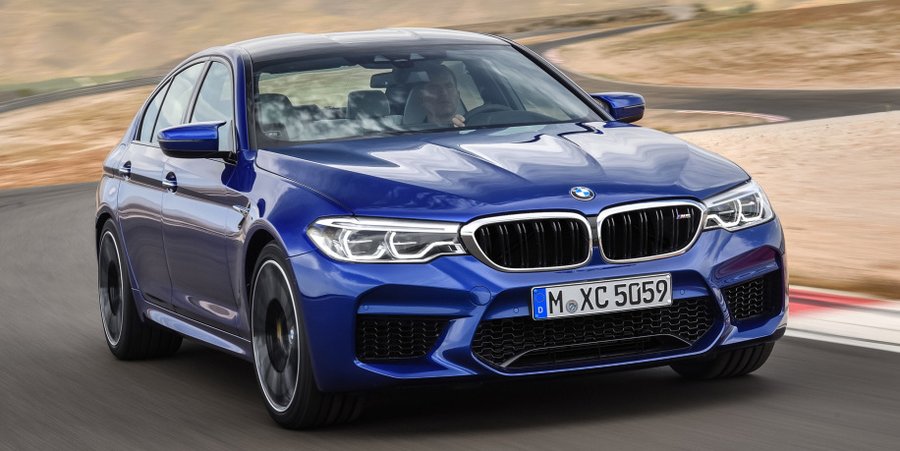2018 BMW M5 makes its official debut with 600 horsepower

Unsurprisingly, it looks like a regular 5 Series with larger grilles, an aggressive rear valance with a faux diffuser, and the trademark vents in the fenders. Inside is much the same, with the major changes being special power heated sport seats with illuminated M5 logos and a pair of bright red M buttons on the steering wheel for individually-customized driving modes.
The important stuff is under the modestly changed skin. The burly Bimmer features a twin-turbocharged 4.4-liter V8 as with the last model, but it makes 600 horsepower and 553 pound-feet of torque. This represents a healthy increase of 40 horsepower and 53 pound-feet of torque respectively over the previous generation. Though BMW did release a highly limited edition of the previous generation that also made 600 horsepower. The power and torque are also available over broad parts of the rev band. Peak power lasts from 5,700 to 6,600 rpm, and peak torque sticks around from 1,800 until 5,700 rpm.
All of this power and torque goes through an 8-speed automatic to an all-wheel-drive system, the first for an M5. As we've covered previously, it's a unique system in that it can function in a purely rear-drive mode, one of three modes in which stability control is shut off. According to BMW, the all-wheel-drive system should also help keep stability control from intervening too soon by providing more traction and control by default. The all-wheel-drive system also allows for better application of the car's power, allowing it to hit 100 km/h in a claimed 3.2 seconds. The M5 is also capable of a top speed of 304 km/h when equipped with the M Driver's Package. Otherwise, the car is limited to 249 km/h.
Power isn't the only thing BMW has focused on. To improve handling, the double-wishbone front setup and the multi-link rear suspension of the standard 5 Series have been revamped. Firmer anti-roll bars and loads of chassis bracing have also been added. In addition, the M5 has 19-inch wheels at each corner, with 275-mm tires at the front, and 285-mm tires at the back. The overall track is wider than the previous generation, too.
For stopping, the M5 gets as standard 15.5-inch steel rotors up front with 6-piston fixed calipers and 15-inch rear rotors with floating single-piston calipers. There are optional carbon ceramic brakes available, too. The front rotors increase in size by a quarter-inch over the stock units, but the calipers remain the same. Opting for the carbon brakes saves a whopping 50 pounds of unsprung weight. BMW has employed a number of other weight saving strategies on the M5, as well. The front hood and fenders are made of aluminum, and the roof is made of carbon fiber. BMW also claims to have saved 11 pounds of weight in the M5's dynamic exhaust system.
Related News
